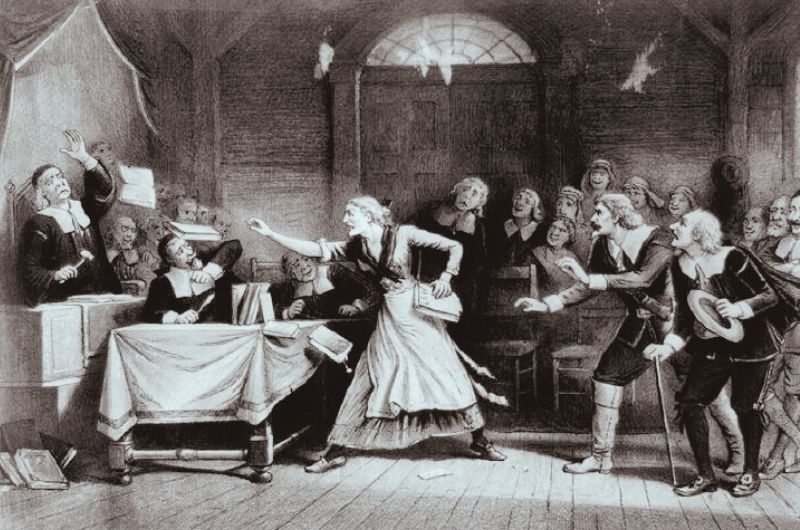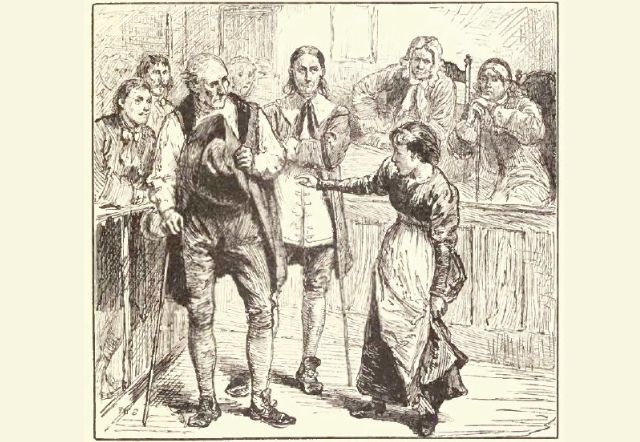
The Salem Witch Trials (1692) - What Really Happened.
Interrogations and convictions led to 20 executions and shaped U.S. colonial history.
Introduction to the Salem Witch Trials
The Salem Witch Trials took place in 1692 in the town of Salem, in present-day Massachusetts, and are among the most famous and tragic events in the history of the United States.
In total, 200 people were accused, 30 were found guilty, and 19 were executed. This dark period reveals a time of superstition, mass hysteria, and unjust persecution of innocent people.
History Brief: The Salem Witch Trials
Video: 25 DISTURBING Facts About The Salem Witch Trials
Causes of the Salem Witch Trials
Social and economic tensions
The causes of the Salem Witch Trials are diverse and complex. Social and economic tensions in the community, particularly between the wealthier residents of Salem Town and the poorer residents of Salem Village, led to rivalries and conflicts that paved the way for the witch trials.
Religious extremism
The Puritan religion, which prevailed in New England, had strict moral codes and was intolerant of deviating views and behaviors. This attitude contributed to the emergence of the witch trials, as it fueled the fear of the devil and demonic influences.
Superstition and mass hysteria
The residents of Salem were heavily influenced by superstition, and there was a general fear of witchcraft and demonic forces. These fears were stoked by local rumors and stories about witchcraft, eventually leading to mass hysteria and the unjust persecution of innocent people.

The house of Samuel Parris, Salem, Massachusetts (today Danvers, Massachusetts), known as the "house where the witch hysteria began."
Two of the main accusers, Betty Parris and her cousin Abigail Williams, lived here.
Course of the Salem Witch Trials
The first accusations
The witch trials began in January 1692, when two young girls, Betty Parris and Abigail Williams, showed strange and unexplained symptoms. Local doctors diagnosed witchcraft as the cause, and soon after, accusations against alleged witches began.

Original Document: Salem Witch Trials
The Arrests and Trials
Throughout 1692, more and more people were accused, arrested, and brought to trial. Many were found guilty based on so-called "spectral evidence" - witness testimonies about supernatural appearances. Confessions were often extracted through torture or under threat of the death penalty.
The Executions
Of the 30 people found guilty, 19 were executed, primarily by hanging. One man, Giles Corey, died by pressing - a gruesome method where large stones were placed on his body to force a confession. Several other individuals died in jail while awaiting trial or serving their sentences.
The End of the Salem Witch Trials and Their Aftermath
The Shift in Public Opinion
Over time, public opinion began to turn against the witch trials. Influential figures such as clergyman Increase Mather criticized the use of "spectral evidence" and called for stricter standards of proof. Doubts about the fairness of the trials and the legitimacy of the convictions increased.
The Dissolution of the Court and Compensation
In October 1692, Governor William Phips dissolved the special court and banned the use of "spectral evidence" in future trials. In May 1693, all remaining prisoners were pardoned. In the following years, compensation was paid to the victims' families, and the community attempted to recover from the events.
The Significance of the Salem Witch Trials in Modern Times
The Salem Witch Trials serve as a reminder of the dangers of superstition, mass hysteria, and religious extremism. They illustrate how fear and mistrust can lead a community to persecute and punish innocent individuals.
The trials are also an important part of American history, contributing to our understanding of the society of that time and the importance of the rule of law and justice
The Salem Witch Trials remain a dark chapter in American history, illustrating the dangers of intolerance, superstition, and mass hysteria.
By examining these events, we can gain valuable insights and hopefully prevent similar tragedies from repeating in the future.
The Archaeological Site of Salem Village Parsonage
The archaeological site of Salem Village Parsonage, where Betty Parris lived during the Salem Witch Trials, was excavated in 1970 and is now open to visitors.
Address:
Rear 67 Center Street, Danvers, Massachusetts
If you are interested in the history of Betty Parris and the Salem Witch Trials, consider visiting the archaeological site of Salem Village Parsonage. Here, you can explore the remains of the building where Betty and her family lived during this dark period of American history.
Other Attractions in Salem
Salem offers numerous other historical sites and attractions related to the witch trials and Betty Parris. Some of these include:
The Witch House
The former home of Judge Jonathan Corwin, one of the judges during the witch trials. The house is the only remaining building in Salem with a direct connection to the trials.
The Salem Witch Trials Memorial
A monument dedicated to the victims of the witch trials. The names of the 20 executed individuals are engraved on granite slabs.
The Peabody Essex Museum: A significant museum featuring artifacts and information about the witch trials and Salem's history.
Gallows Hill Park
This park marks the location where 19 of the 20 people executed during the witch trials were likely hanged.
For history enthusiasts and those who want to learn more about the Salem Witch Trials, these sites are worth visiting. They not only provide insight into the events of 1692 but also allow for a deeper understanding of the society of the time and their fears






